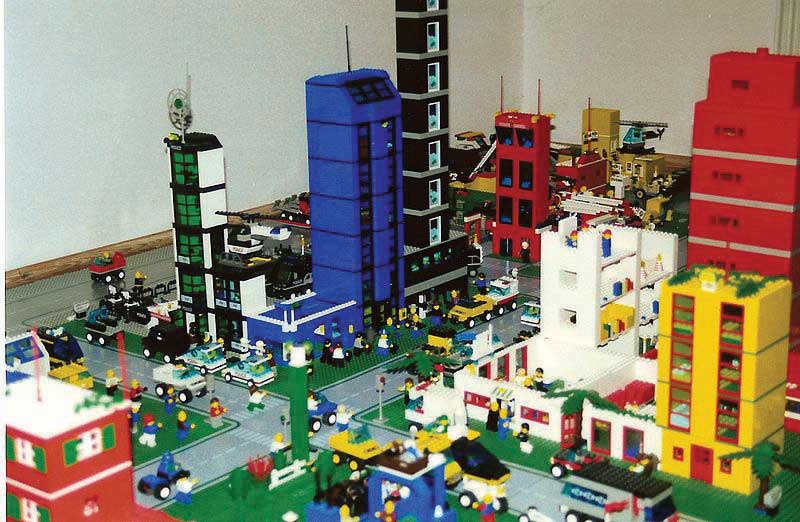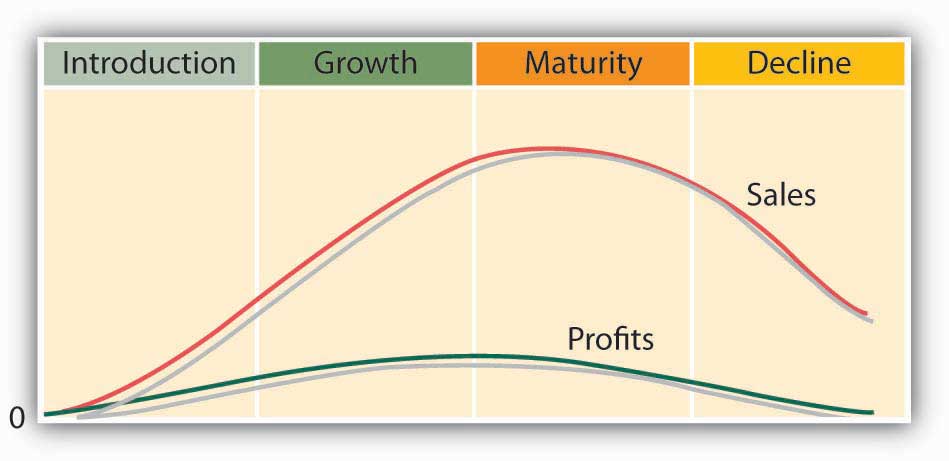This is “The Product Life Cycle”, section 9.6 from the book An Introduction to Business (v. 1.0). For details on it (including licensing), click here.
For more information on the source of this book, or why it is available for free, please see the project's home page. You can browse or download additional books there. To download a .zip file containing this book to use offline, simply click here.
9.6 The Product Life Cycle
Learning Objective
- Explain how a product moves through its life cycle and how this brings about shifts in marketing-mix strategies.
Figure 9.13

LEGO has decided to go back to basics and focus on the classic bricks rather than complicated kits.
Did you play with LEGO blocks when you were a kid? Almost everyone did. They were a big deal. Store shelves were stacked with boxes of plastic bricks, wheels, and windows, plus packages containing just the pieces you needed to make something special, like a LEGO helicopter. McDonald’s put LEGO sets in Happy Meals. If you walk down a toy-store aisle today, you’ll still find LEGOs. Now, however, they’re shelved alongside Game Boys, Xboxes, Pokémon characters, and other playthings that appeal to contemporary kids. Like these products, they’re more sophisticated. They’re often tied in with state-of-the-art products—movies like Star Wars, Spider-Man, and Harry Potter. Nowadays, even the instructions are complicated, because the product has changed: LEGOs are no longer marketed as a toy that encourages free-form play. Sadly, LEGO sales declined drastically in the early 2000s. Laments the company’s annual report, “2003 was a very disappointing year for LEGO Company.” Net sales fell by 26 percent, resulting in a loss in earnings for the year and significant decline in market share. LEGO now plans to drop many of its recent initiatives and focus on its classic LEGO brick products.LEGO Group, Annual Report 2003, http://www.lego.com/eng/info/default.asp?page=annualreport (accessed May 21, 2006).
The LEGO brand is moving through stages of development and decline.See “Lego Attempts to Woo Back Preschoolers by Relaunching Duplo Series,” KeepMedia, February 2, 2004, http://www.keepmedia.com/pubs/AFP/2004/02/02/364595 (accessed May 21, 2006); “Is There a Future for Lego in Kids’ High-Tech Game World?” KeepMedia, January 10, 2004, http://www.keepmedia.com/ShowItemDetails.do?item_id=348949 (accessed May 21, 2006); Charles Fishman, “Why Can’t Lego Click,” Fast Company, September 1, 2001, http://www.fastcompany.com/online/50/lego.html (accessed May 21, 2006). Marketers call this process the product life cycleFour stages that a product goes through over its life: introduction, growth, maturity, and decline., which is illustrated in Figure 9.14 "The Product Life Cycle". In theory, it’s a lot like the life cycle that people go through. Once it’s developed, a new product is introduced to the market. With any success at all, it begins to grow, attracting more buyers. At some point, the market stabilizes, and the product becomes mature. Eventually, however, its appeal diminishes, and it’s overtaken by competing brands or substitute products. Sales decline, and it’s ultimately taken off the market.
Figure 9.14 The Product Life Cycle

This is a simplified version of the cycle. There are lots of exceptions to the product life-cycle rules. For one thing, most products never make it past the introduction stage; they die an early death. Second, some products (like some people) avoid premature demise by reinventing themselves. LEGO has been reinventing itself for the last fifteen years, launching new products in an effort to recover its customer base and overcome a series of financial crises. Unfortunately, this strategy has been unsuccessful. The introduction of new products and the resulting costs “have not produced the desired results. In some cases,” admits the company, “new products have even cannibalized on the sales of LEGO Company’s core products and thus eroded earnings.”LEGO Group, Annual Report 2003, http://www.lego.com/eng/info/default.asp?page=annualreport (accessed May 21, 2006).
Life Cycle and the Changing Marketing Mix
As a product or brand moves through its life cycle, the company that markets it will shift its marketing-mix strategies. Let’s see how the mix might be changed at each stage.
Introduction
At this stage, most companies invest in advertising to make consumers aware of a product. If it faces only limited competition, it might use a skimming-pricing approach. Typically, because it will sell only a relatively small quantity of the product, it will distribute through just a few channels. Because sales are low while advertising and other costs are high, the company tends to lose money during this stage.
Growth
As the company focuses on building sales, which are increasing rapidly at this stage, its advertising costs will go up. If competition appears, it may respond by lowering prices and distributing through multiple distribution channels. With sales going up and costs going down, the product becomes more profitable.
Maturity
If a product survives the growth stage, it will probably remain in the maturity stage for a long time. Sales still grow, though at a decreasing rate, and will eventually stabilize. Advertising will be used to differentiate the product from competition. Price wars may occur, but profits will be good because sales volume will remain high. As the product becomes outdated, the company may make changes in keeping with changing consumer preferences.
Decline
LEGO is now in this stage: demand has declined as more innovative products absorb the attention of kids. Price competition has become more intense, and profits are harder to come by; in fact, in some years they’ve turned into losses. As we’ve seen, LEGO has tried to revitalize the product, but ultimately the company may have to give up and pull the product from the market.
Key Takeaways
- The stages of development and decline that products go through over their lives is called the product life cycle.
-
The stages a product goes through are introduction, growth, maturity, and decline.
- Once it’s developed, a new product is introduced to the market.
- With any success at all, it begins to grow, attracting more buyers.
- At some point the market stabilizes, and the product becomes mature.
- Eventually, its appeal diminishes, and it’s overtaken by competing brands or substitute products. Sales decline and it’s ultimately taken off the market.
- As a product moves through its life cycle, the company that markets it will shift its marketing-mix strategies.
Exercise
(AACSB) Analysis
Did you ever have a Nintendo Game Boy? Is the product still popular? Like all products, Game Boy has a product life cycle. Your job is to describe that product life cycle. To learn something about the product, go to the Web, log on to your favorite search engine (Google, Yahoo!), and enter the phrase “Game Boy history.” Identify each of the product life stages that Game Boy has gone through, and speculate on the marketing actions that Nintendo would have taken during each stage. Where do you think Game Boy is now in its product life cycle? Where do you think it will be in five years? Justify your answers.




